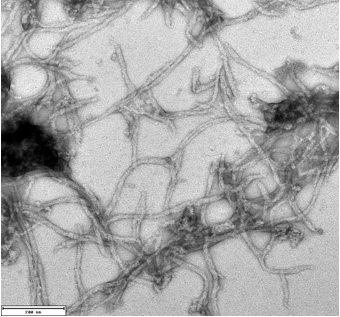Study of the assembly and reconstitution of the cytoskeletal glial fibrillary acidic protein (BEP/MEP)
Description
Glial Fibrillary Acidic Protein (GFAP) is a biopolymer from the cytoskeleton, belonging to the intermediate filament family. It has been reported as a marker for glioma and neurodegenerative diseases and has started to get more attention from the scientific community in the recent years.
This project focuses on studying how GFAP assembles and forms filaments, not only on its own, but when exposed to other neighbouring intermediate filaments, as it happens in the cells. Those can be the different isoforms of GFAP (variations in the head or tail domains of the protein), as well as when in closeness to vimentin.
- How do these filaments form?
- Do they combine with other filaments? At what stage of the hierarchical assembly does this happen?
- What are the right conditions that form the different mechanical architectures (e.g., bundles, crosslinking, etc.)?
For that, the aim of this project is to study the molecular and physical assembly and reconstitution via microscopy (Total Internal Reflection Microscopy (TIRF) and Transmission Electron Microscopy (TEM)).
Contact
Irene Istúriz Petitjean (I.IsturizPetitjean@tudelft.nl) and Prof. Dr. Gijsje Koenderink (G.H.Koenderink@tudelft.nl)
